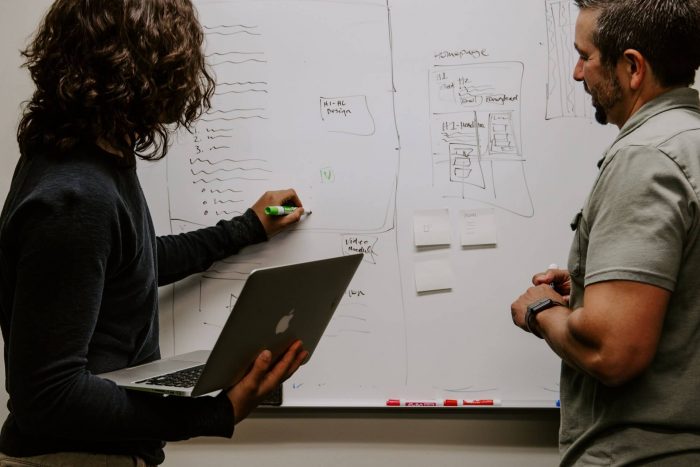Amidst upskilling, hybrid working and the next normal, another term has fought its way to the forefront of current trends within learning and development: business agility.
Given the rapid pace of change, it’s no surprise that organisations worldwide are striving to become more adaptable and ready to take on any unexpected challenges that might come their way. But how can you ensure your business and the workforce, are as agile as you need them to be?
Agility?
First, let’s cover what agility actually means in a business context. Business agility refers to an organisation’s ability to quickly and continuously adapt when faced with changing markets and environments. But even more so, business agility emphasises the constant innovation needed to maintain a competitive advantage. Research has shown that organisations who implement agile transformation correctly, experience a serious performance boost. In fact, 65% of businesses who cited their own agile transformation as ‘highly successful’ reported a significant impact on their financial performance. This indicates the innate value of prioritising a business strategy that drives agility.
Moreover, during the last year, more and more L&D departments have acquired a seat at the c-suite table, gaining influence and the power to directly drive business transformation. To maintain their authority beyond the COVID-19 pandemic, L&D will have to prove their worth to long-term business aspirations and become a leader for change. Yet implementing agility is not as easy as it may seem.
To get you started, we have compiled three areas you might want to consider when beginning your agility transformation:
-
Strategy

Perhaps the most obvious, though often overlooked step is to implement agility into your learning strategy and adapt your processes to incorporate an agile approach. Start by defining what agility means to your organisation and to your department, perhaps instead of waiting for a new learning intervention to be polished to perfection, you release it to a small focus group in earlier stages and build upon the feedback you receive. The important thing to note here is that agility does not have to happen overnight, you can take it one project or one iteration at a time. Discover what approaches your workforce responds to or engages with and continue to build upon those until you have achieved the fluidity and flow efficiency that agility is known for. This can reduce risk while increasing your turnaround and employee satisfaction.
-
People
Your people are your company, they represent and act upon the values of your organisation. Therefore, building an understanding of your business strategy, processes and thus, agility is key. Studies have shown that an agile work-environment with cross-functional teams increases employee engagement by 20 to 30%. This often results in higher performance rates as employees are more invested in their work and its outcomes, as they understand their purpose or goal within the wider company.

Additionally, with the lifetime of a skill rapidly decreasing, promoting a continuous cycle of skills development is imperative to future-proofing your organisation and helping to generate an agile mind-set within your employees. By providing the tools for learners to self-assess and consider their existing skill sets – as well as where they may need development – you can be on the path to building a workforce filled with self-determined learners that are ready to tackle whatever challenges come their way. Fostering this flexibility and adaptability within your employees can play an important role on the route to agility.
-
Technology
The right technology is a crucial part of successfully implementing agility within your organisation. It needs to underpin and support all other areas of your learning strategy, your workforce and their self-development. We developed our Create Your Own Future platform, as a means to upskill and reskill at scale, while still keeping that human touch. The functionality and design of the platform was rated highly by 100% of users and at the end of their journey, users’ confidence was raised by 91%. The success of the platform is an excellent indication of what a powerful tool can achieve in learner engagement self-determination; a crucial component of agility.

Employing technology that matches your agility needs and enables your processes rather than hinders them is critical to achieving a successful agility transformation. This goes hand in hand with our previous two points. Build focus groups and consult your workforce to ensure new technologies provide value to their job and engages them. Only then will you be able to see behaviour change taking place.
Conclusion
Agile businesses are well-equipped to take on the rapidly changing environments that are bound to challenge us in the future of work. By implementing an agile mind-set into your learning strategy, fostering adaptability within your workforce and underpinning everything with technology that facilitates these changes, you can ensure your organisation is ready for the next normal and can thrive amidst any future challenges.
Want to discover how you can implement agile transformation into your L&D strategy? Talk to one of our consultants today!




